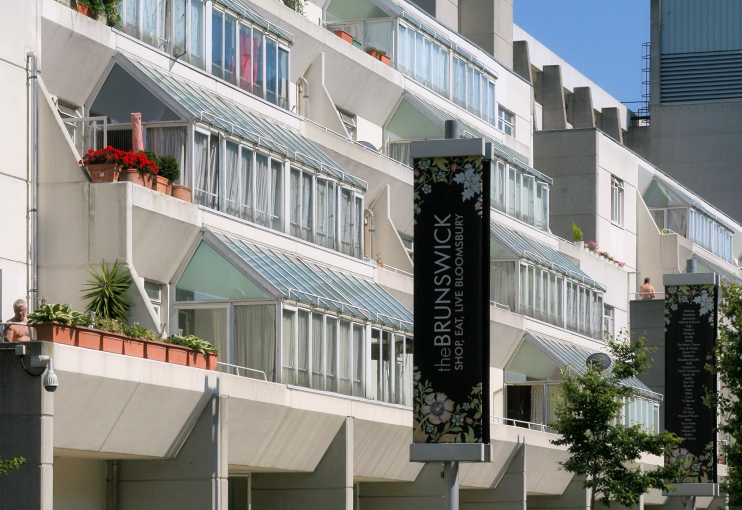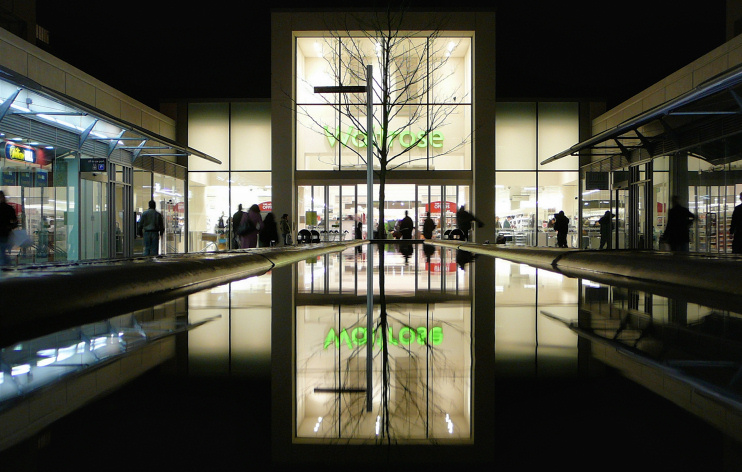The Brunswick
The Brunswick, Camden
A concrete megastructure built in the late 1960s north-east of Russell Square in Bloomsbury

This was the site of a series of Georgian and Victorian terraces, deemed substandard and overcrowded by the council – but almost certainly capable of rehabilitation. The architect Patrick Hodgkinson created a pair of layered terraces consisting of flats with glazed ‘wintergardens’, shops at ground level and car parking below.
Many aspects of the original plan never came to fruition. A third set of flats was proposed for Handel Street in place of the Territorial Army centre; the shopping area was to have been glazed over; the concrete should have been painted cream to match the neighbouring Georgian stucco; and the centre was originally intended as a private development by Marchmont Properties, but Camden council stepped in to take responsibility for the housing. The Brunswick Centre was conceived as a nucleus for the future redevelopment of the entire neighbourhood, which also failed to materialise.
The centre was named after neighbouring Brunswick Square, which was in turn named in honour of Caroline of Brunswick, who was Princess of Wales from 1795 and Queen consort from the accession of George IV in January 1820 until her death in August 1821.
Despite the many mutations, the Brunswick Centre is reckoned an architectural success and was grade II listed in 2000. The Brunswick (as the centre is now styled) has since been redeveloped by Allied London Properties, with its shops branded as ‘Bloomsbury’s high street’. A purpose built Waitrose supermarket closes off one end of the radically transformed retail and restaurant area.

The Curzon Bloomsbury (for a long while known as the Renoir) was built as an integral part of the Brunswick Centre, on its eastern edge. The Curzon specialises in world cinema and documentaries.
When Thomas Coram’s foundling hospital was pulled down in the 1920s its archive was relocated to 40 Brunswick Square. The Foundling Museum’s collection includes works of art by Hogarth, Gainsborough and Reynolds as well as social history objects relating to London’s first children’s home.
Brunswick Square Gardens were re-landscaped in 2002/3 and given new railings, paths and seating. The gardens’ Brunswick Plane is reputed to be the capital’s second oldest London plane and was designated a Great Tree of London in 2009.
Brunswick Square is mentioned (eleven times) in Jane Austen’s Emma as the home of the protagonist’s sister Isabella.
The actress and comedian Catherine Tate was brought up in one of the Brunswick Centre’s council flats.
